Intuitive Painting Step by Step
This week, we are creating an intuitive painting step by step. This project is more about following a process and mindset than trying to replicate my example.
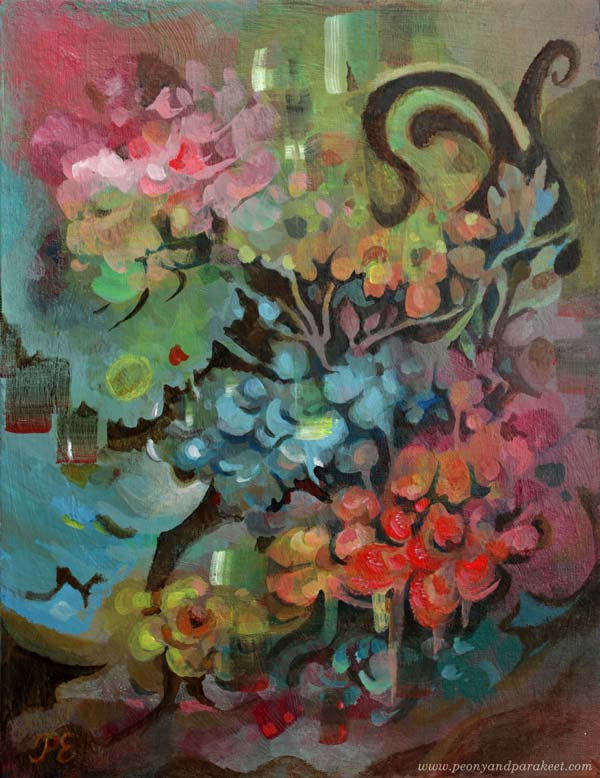
I call this “Deer to Dream” because if you look at it from a distance, it looks like a bunch of flowers the view is more interesting when you find the deer. This is a small acrylic painting, 35 x 27 cm (about 13,5 x 10,5 inches).
Step 1 – Explore Mud – Paint a Background
Pick a few tubes and mix colors freely. Allow mud to be born!
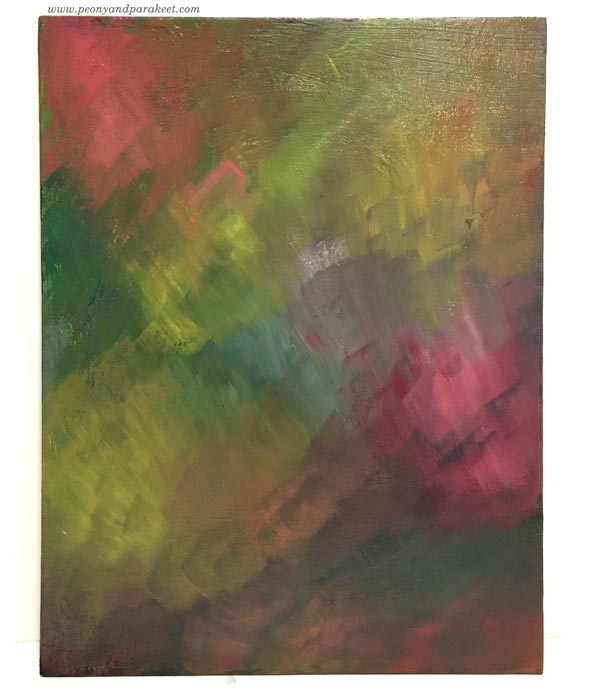
Don’t expect clarity right from the beginning, but trust that the painting process will purify your mind. The muddy start will make you grounded.
Step 2 – Take a Flight – Paint a Flock
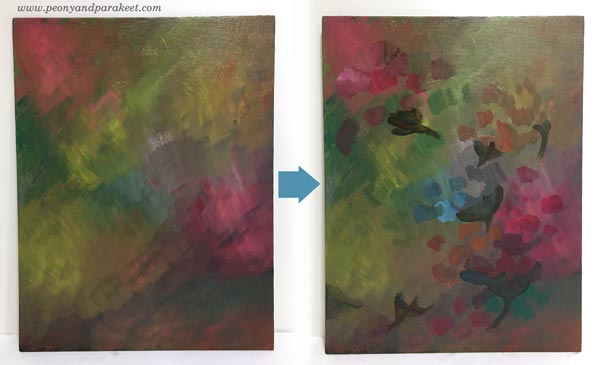
With a bit brighter tones, add strokes so that they make a stream across the painting. Paint dark shapes so that they group the strokes.
Keep the focus on expressing the movement rather than trying to create something accurate and realistic. The groups can be flowers or birds or anything that comes to your mind.
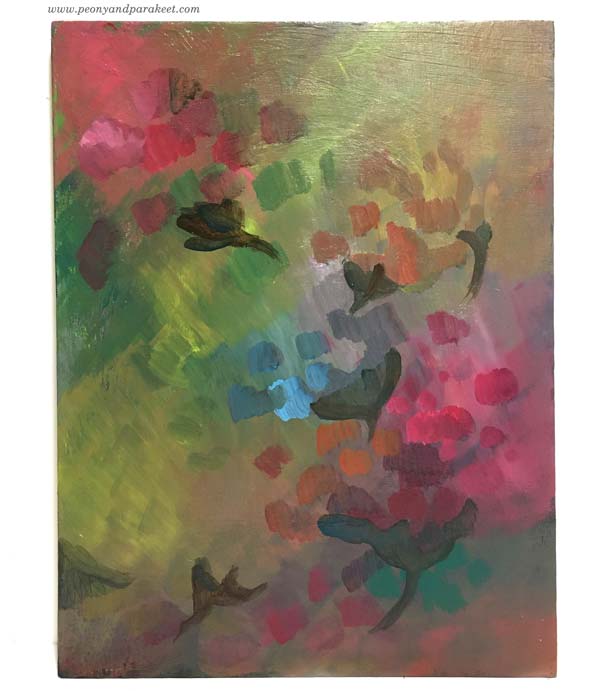
Your spirit has raised from the mud and begun a journey to a new world.
Step 3 – Land Towards the Light – Add Bright Pastels to the Flock
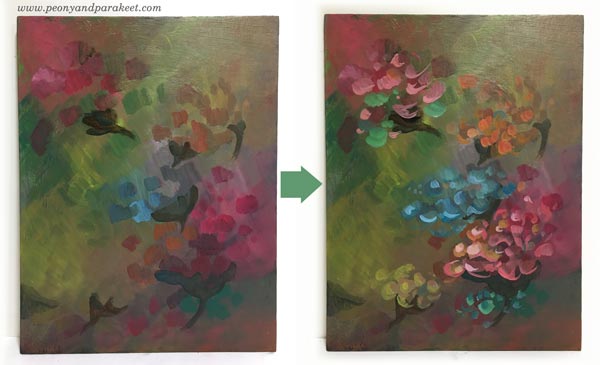
Mix white to the colors, and add bright strokes to the elements. They are now exposed to light, and the flight is getting closer to its destination.
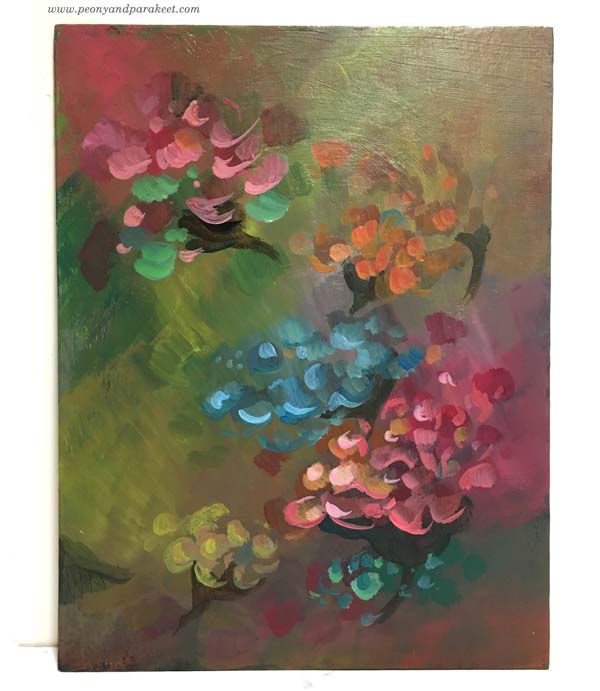
You can leave the painting like this, but for me, intuitive painting is an adventure rather than a safe performance, something that includes risk and excitement, and we haven’t gone far enough yet. So, let’s keep painting!
Step 4 – Become Adventurous – Paint over the Elements
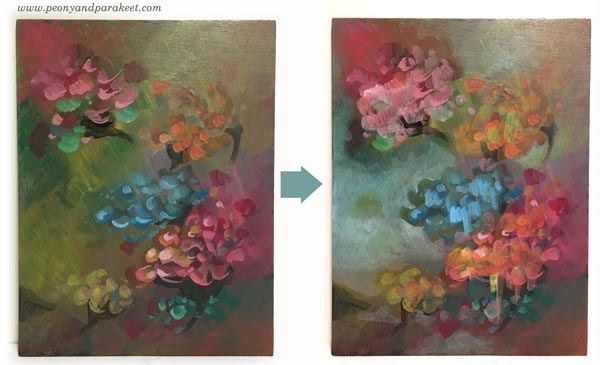
When we want to deepen the process, disruption is needed. Use a little bit more water and make brush strokes that partly cover what you have painted so far.
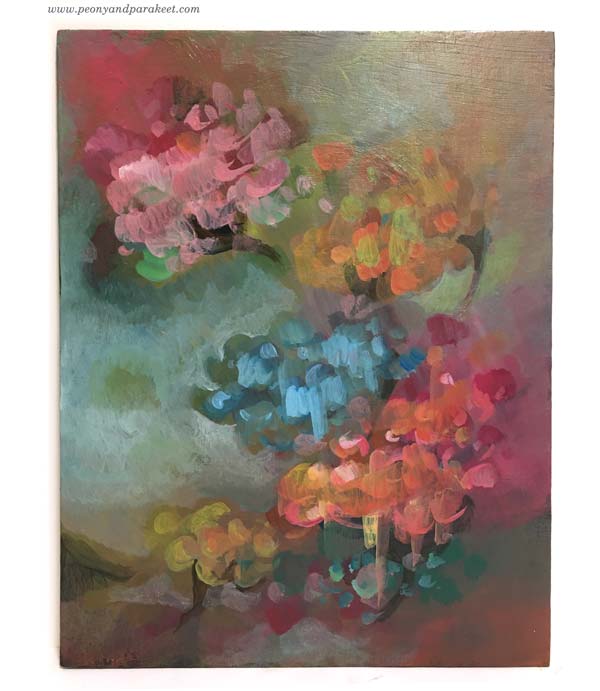
New layer is like an emotion that takes over. It makes the painting messier, but also freer and more open to new ideas.
Step 5 – Explore the Wilderness – Paint Details
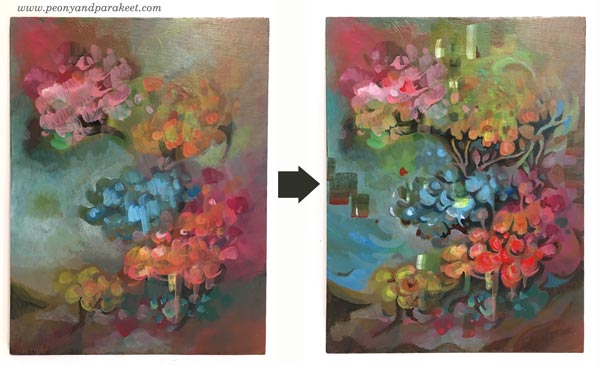
The painting is now like a wilderness, and you need to know its every corner. Slowly go through every small area and forget the big picture. Make paths from one element to another, allow some parts to become more intense than others, and add little spots and strokes where you want the eye to stop and admire the view.
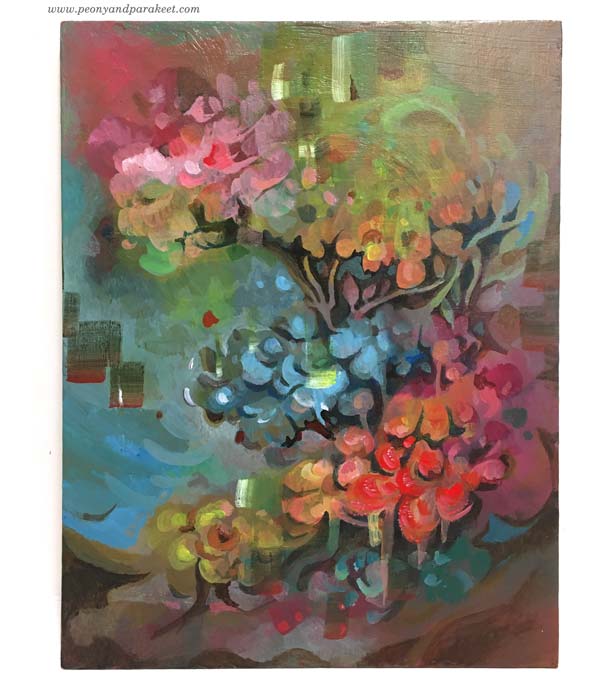
Imagine that every shape has a personality and that it’s your mission to make the shapes interact with each other. Connections can be built so that they share a line, a color, or form.
In this step, you begin to experience creative freedom. At first, it’s like a smell that you become slowly aware of. It’s a possibility to take a new direction and follow your instinct. So again, let’s keep painting!
Step 6 – Dare to Dream – Meet a Spirit
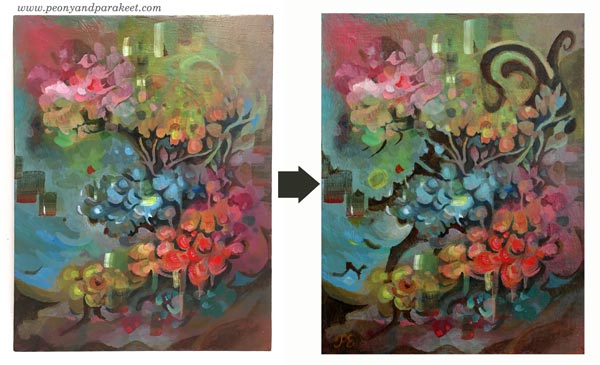
Dare to dream further than what you would expect in the beginning! Every painting has a spirit and your mission as an intuitive painter is to recognize it. Even if it’s you who created the painting, the spirit is free.
Feeling the presence of the painting’s spirit is often enough, but recently, I have dared to look at it to the eye and paint it too.
You may also want to read my previous post about artistic spirit!
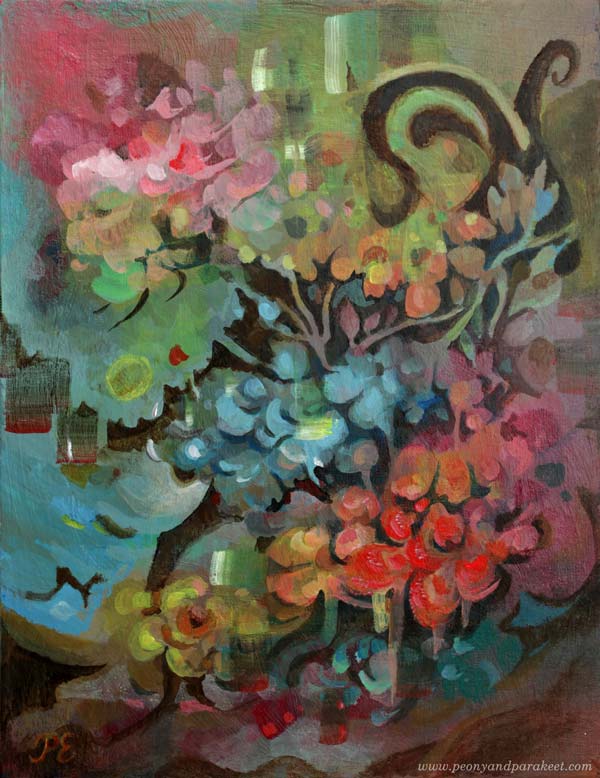
Intuitive Painting Step by Step with Watercolors?
I used acrylic paints for the project but it’s possible to follow the process for watercolors too. Here are my additional tips for watercolors:
- Start with lots of water and very light tones.
- Let the painting dry between every step.
- Slowly darken the color palette of the painting towards the last step.
More to Come – A Big Intuitive Painting in Progress
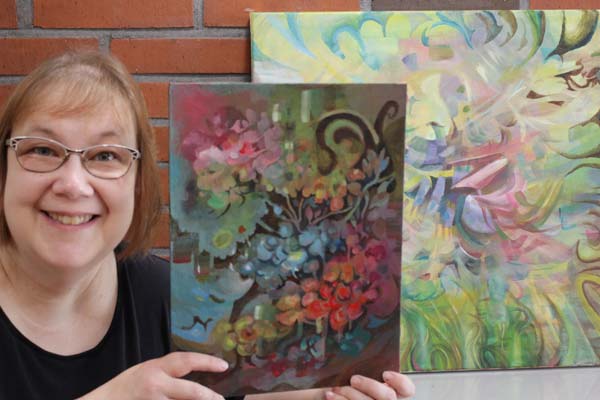
I hope that you enjoyed this project! I also have a big intuitive painting in progress, and I am excited about how it has taken off. I will talk more about it in upcoming posts.
Rainbow Journal – Fill a Small Notebook with Happy Art!
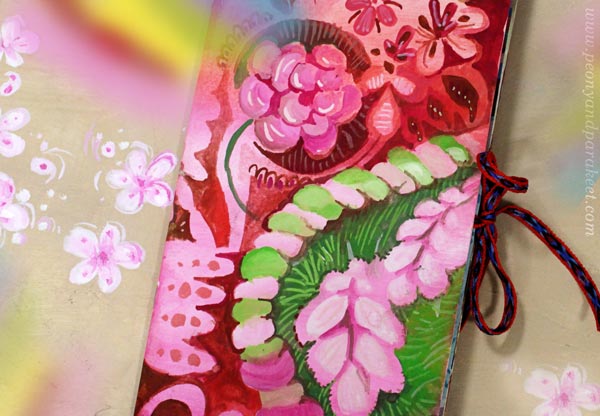
This week, I get back to the project that I started earlier this spring. It’s a small notebook that I have filled with happy art. I call it Rainbow Journal because it has brought me both joy and hope. Here’s a quote from the video below:
“When working on this journal, I have been able to live inside a happy bubble momentarily. It’s been refreshing, and my inner critic has got gentler. I have gained new inspiration for my paintings and classes.”
Watch the video to get inspiration for yours!
Creative Prompts for Your Rainbow Journal
Use the following prompts to make yours!
Cover – Make It as Decorative as You Can!
Use a limited color palette and let the colors and shapes flow.
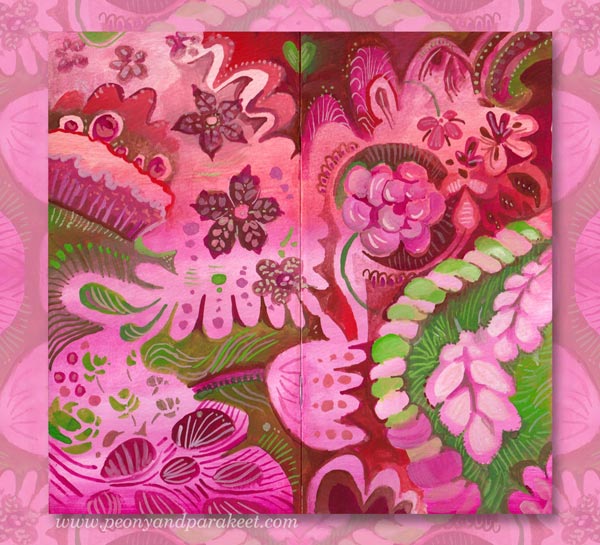
Spread #1 – Get Inspired by Happy Interiors!
Think about textiles, wallpapers, and painted motifs on wooden furnitures and dishes.
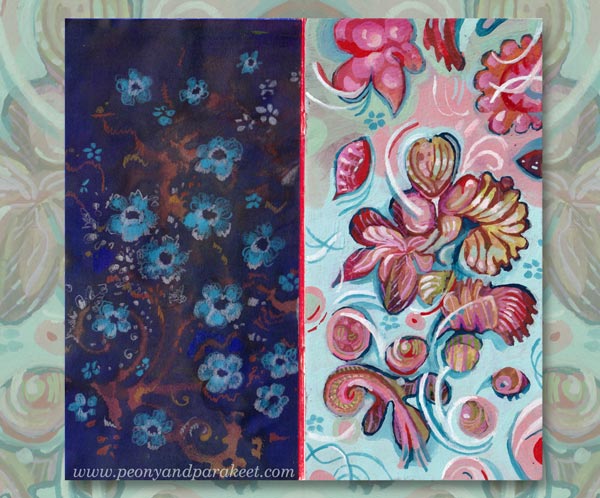
Spread #2 – Embrace the Good and the Innocence!
Once you have set the style of the world you are building, who could be wandering there, full of happy thoughts with an innocent mind?
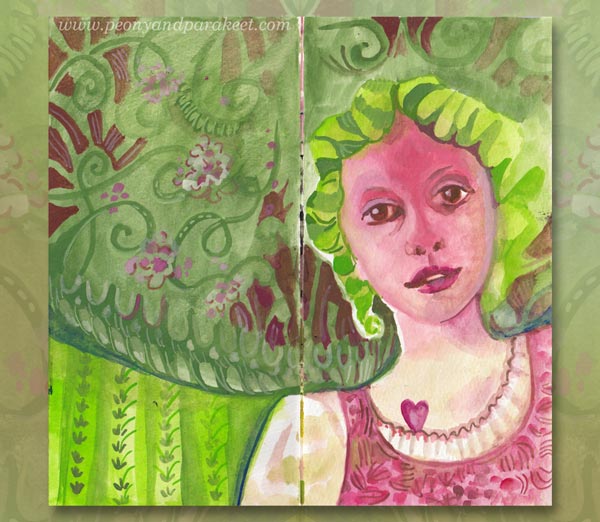
Spread #3 – Paint Something Juicy!
Show how it feels when the glass is full, even overflowing.
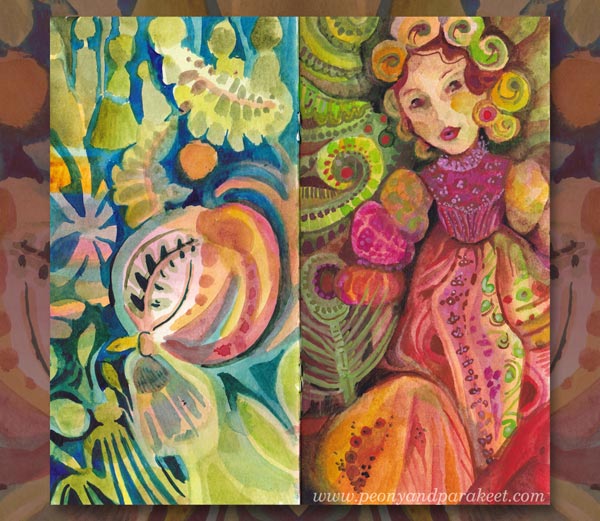
Spread #4 – Grow the Flowers of Imagination!
The dark soil makes flowers grow and shine.
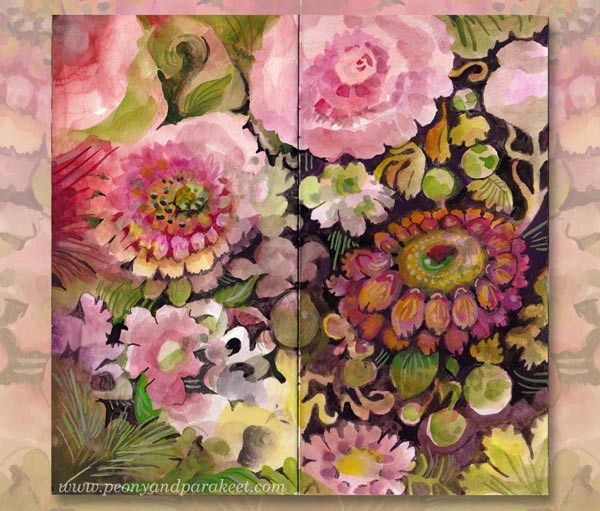
Spread #5 – Show the Bright Future!
Get creative with rainbows, how many can you fit in?
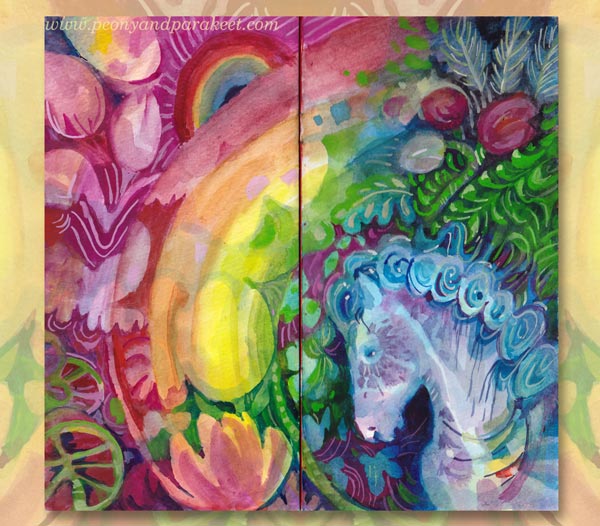
I hope this lifted your spirit and inspired you to keep creating!
Get a free mini-course when you subscribe to my inspirational weekly emails!
Happy Valentine’s Day!
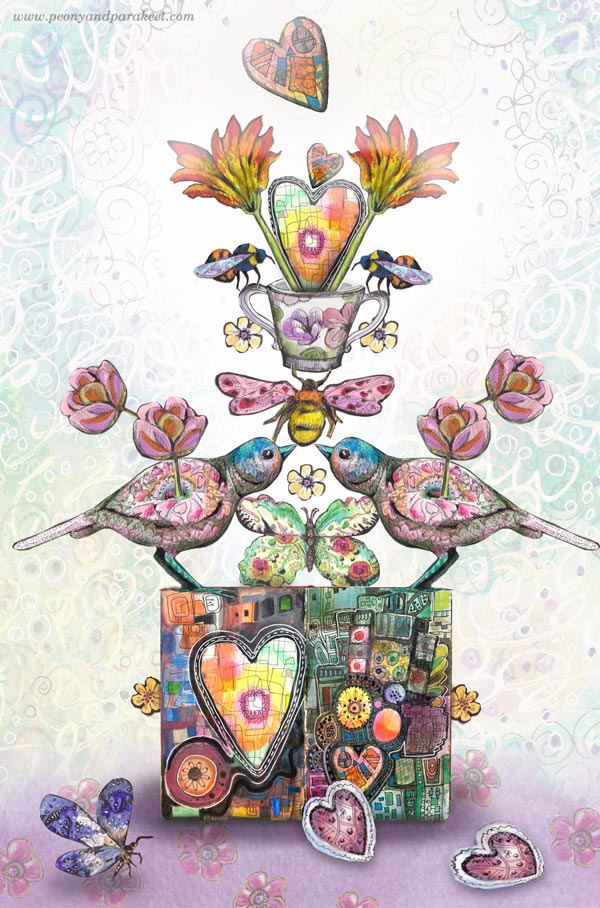
When like-minded hearts gather together, life feels wonderful.
What starts from a simple circle can grow wings,
and then support others.
Isn’t that what creating is all about?
Happy Valentine’s Day!
Start drawing your world of fantasy! – Subscribe to my weekly emails and get a free mini-course!
Intentional or Intuitive Art – Create Both!
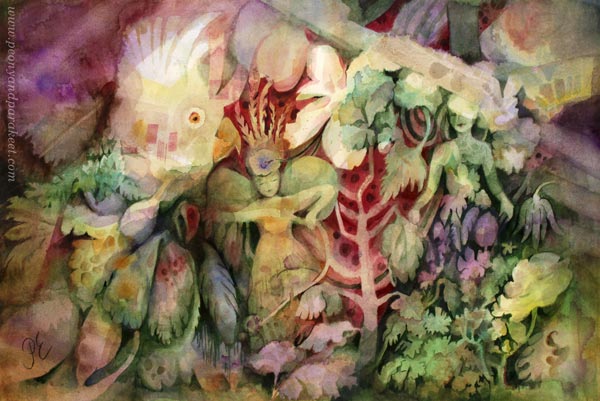
Here’s my new watercolor painting called “Tree of Friendship.” It’s painted freely, first by splashing water, and then by changing to more intentional strokes. But I also show another piece, a more controlled one that I made after this painting. I like to toggle between intuitive and intentional approaches, and maybe this is a working solution for you too in your artistic journey.
Intuitive Art – Start with Freedom!
I regularly need the freedom to paint without any predefined image in mind. If everything that I do is sketched, pre-planned, pre-thought, it’s suffocating. Watercolors have become my favorite medium because they dry rather quickly. I can also splash them without worrying about my safety or the cleaning of the clothes and the studio.
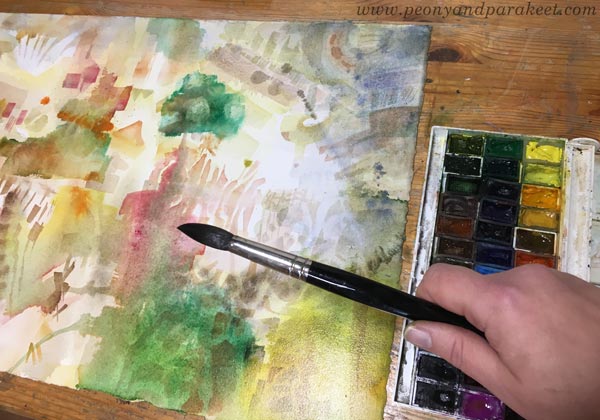
Even if I begin with abstract shapes, most of my work is representational, at least to some degree, when it’s finished. So I slowly discover what the painting could represent and move towards a more intentional approach.
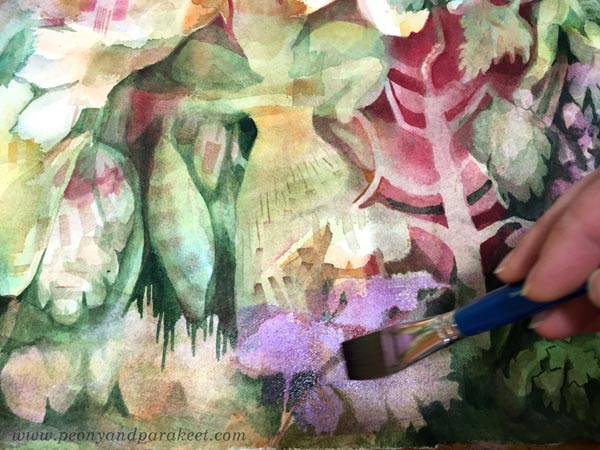
However, I try not to force anything and leave many elements so that they are not fully realistic. I love this freedom between representational and abstract art.
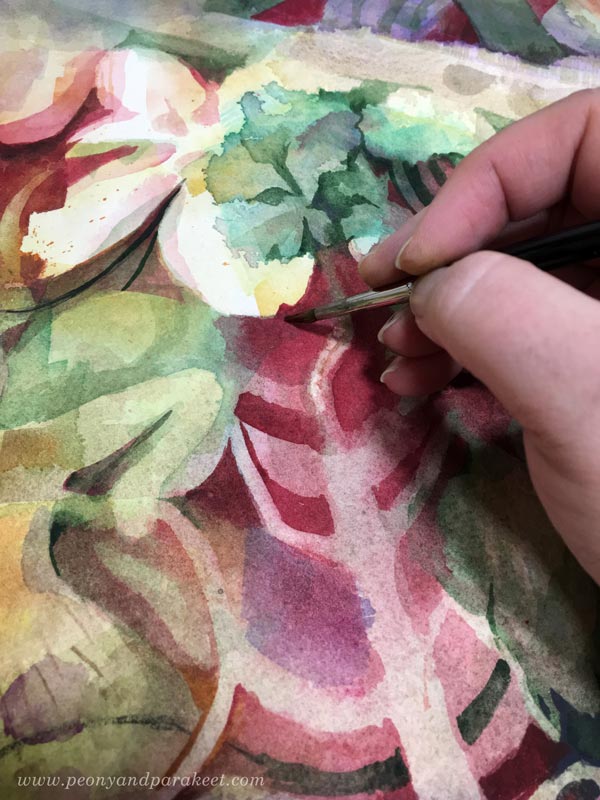
In the later stages, I practice intuition so that if I feel like I need to add irrational elements, I do it no matter how silly it is. Then I challenge myself to make them work. In this painting, some color was thrown on the forehead of the other fairy. The spot was connected with the big white flower by drawing a stem.
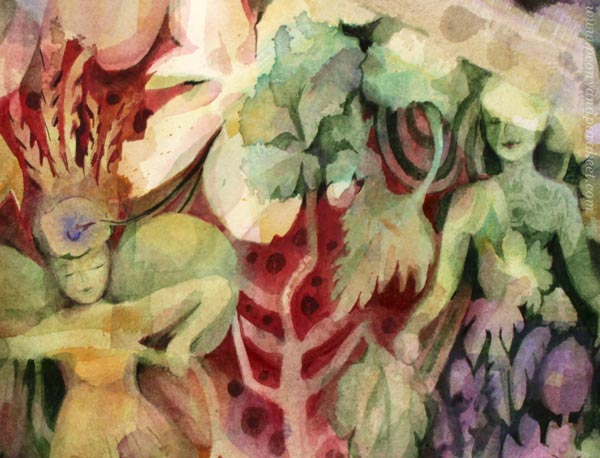
I also like to paint a small area at the time. Then time stops, and painting captivates me. It feels like an adventure, not knowing what will appear within time.
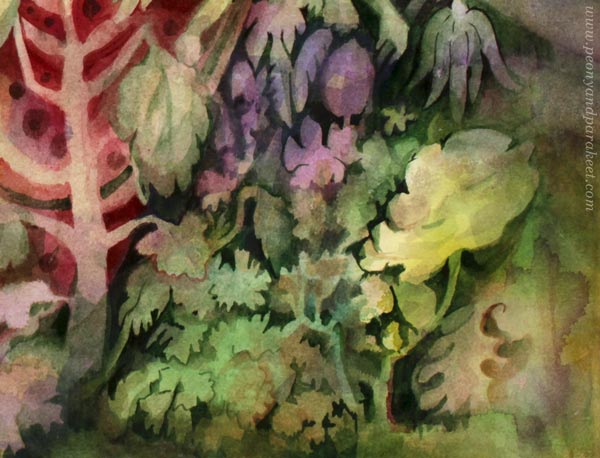
When I paint intuitive art, I often end up creating a challenge that feels almost too big. My self-confidence gets low, and freedom gradually becomes a chaotic prison.
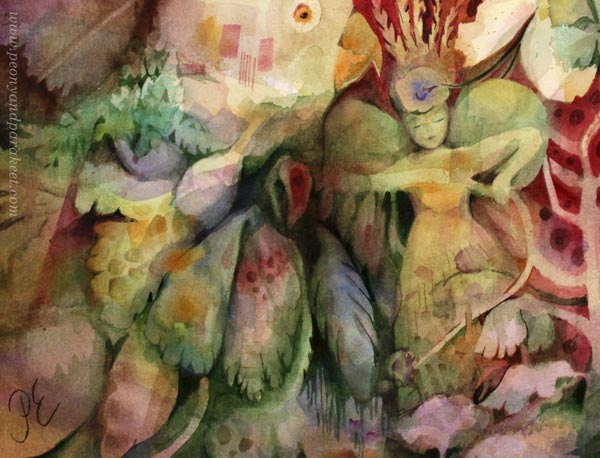
After this painting, I felt pretty empty and disappointed. I barely managed to make it work, and I questioned many times if this is what I want to do as an artist. I painted this piece for about two days. It took one good night’s sleep to get over the disappointment!

This painting is about the beauty of true friendship, secretly connecting two different souls together. When I create intuitive art, I am often able to express bigger themes and more deeply than if I work intentionally.
Intentional Art – Start with Order!
After some free painting, I am usually ready for order, and this time was no exception. Updating the watercolor chart grounds me. I try to do it whenever a pan gets empty and needs to be replaced. The more that I have painted, the more planned my storage has become. I have documentation about the new color that will replace the old one after it’s been used. The upcoming colors have been mentioned in the chart under the actual color.
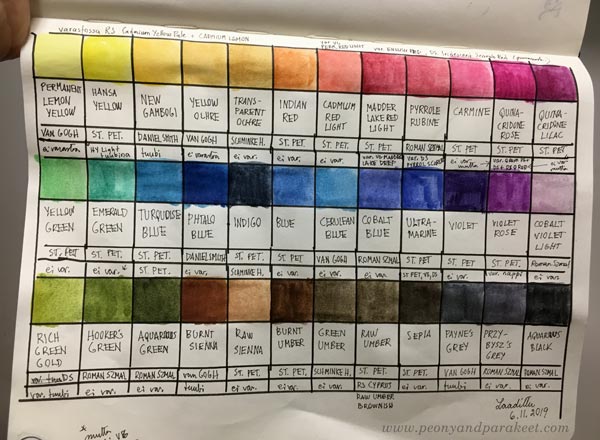
So I have this very controlled side of me that makes me paint a new chart and then memorize it so that when I paint, I don’t have to guess or search for a specific color.
This intentional part of me likes to paint or draw in an illustrative style. Then I often make a quick sketch first. This time, I sketched the face and other main elements lightly with a pencil on watercolor paper and then filled the outlines by painting. I got inspiration from pre-raphaelite paintings and had been thinking for a long time to include more clocks in my work because I really like them.
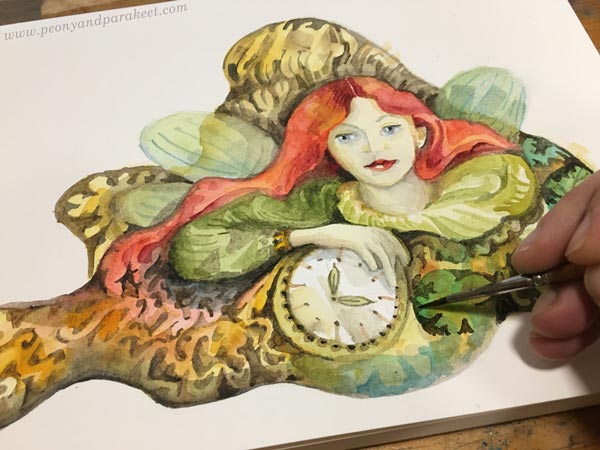
Even if I painted the textures, shadows, etc. freely, there was definitely no splashing involved. I used water much more sparingly and knew what I was doing most of the time.

The intention of making this piece went so far that I had made a couple of collage pieces to test the style beforehand.
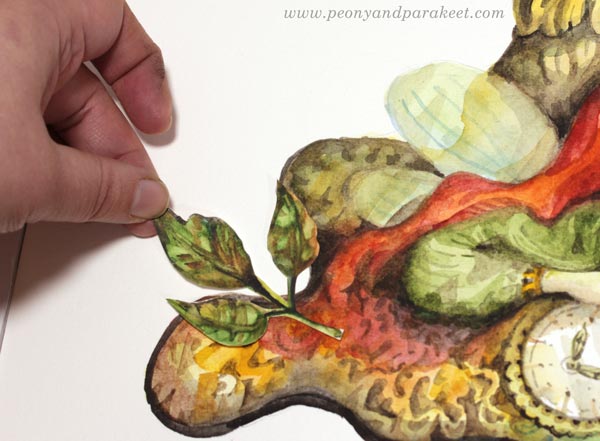
I quite liked how they seemed to fit, and there was no emotional ups or downs!

Why Alternate Between the Intuitive and the Intentional?
If I only painted intuitively, my technical painting skills would stop growing and decay. If I only painted intentionally, my ideas would become too traditional, and I would express too little of myself.
Sometimes we intuitively feel the urge to one direction or another. When you say next time: “I would like to become an abstract painter”, maybe it can be interpreted so that you have left too little room for self-expression lately. Or, if you say “I find it difficult to understand or create abstract art,” maybe it means that you need to practice your technical skills to move forward. Whatever is the case, open the other door too. Permit yourself to let go, and then get back in control again.
Some readers may find this advice worrying, dangerous even when they want to find their style and be consistent in what they do. I would not worry about that too much. If you compare my pieces below, they are not very different from each other. The two approaches will strengthen your voice and make sure that you will keep growing your skills as well.
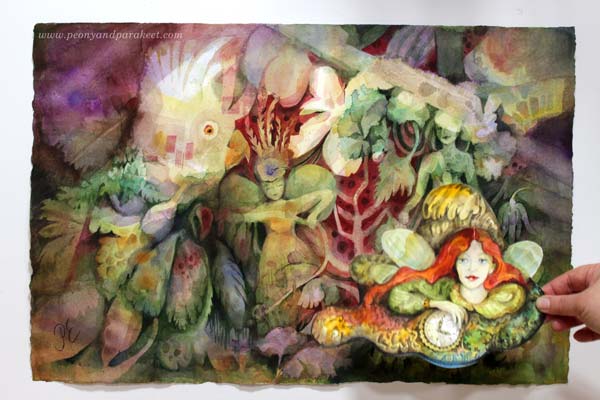
I am currently building a class that consists of creating both intentional and intuitive art. I am interested to hear your thoughts on the subject! What do You think?